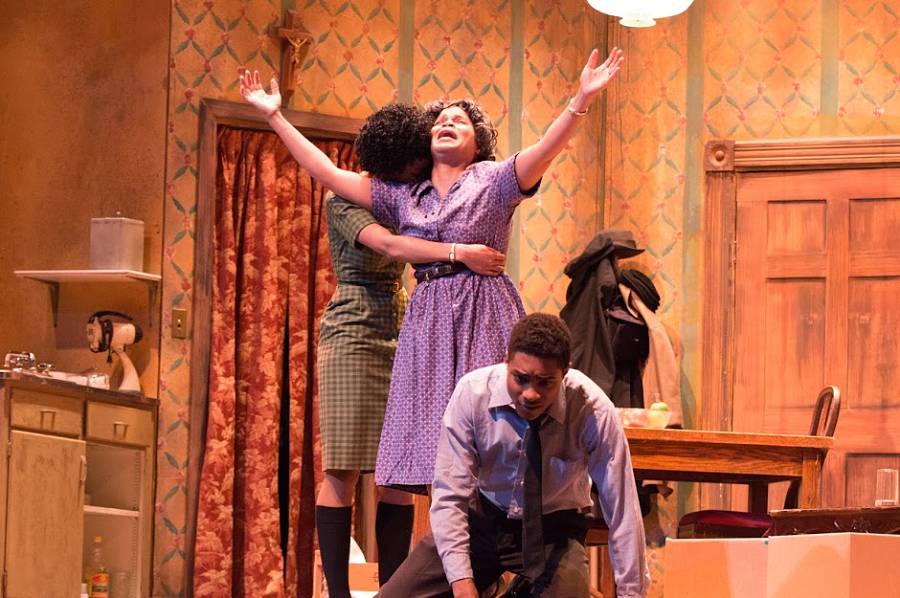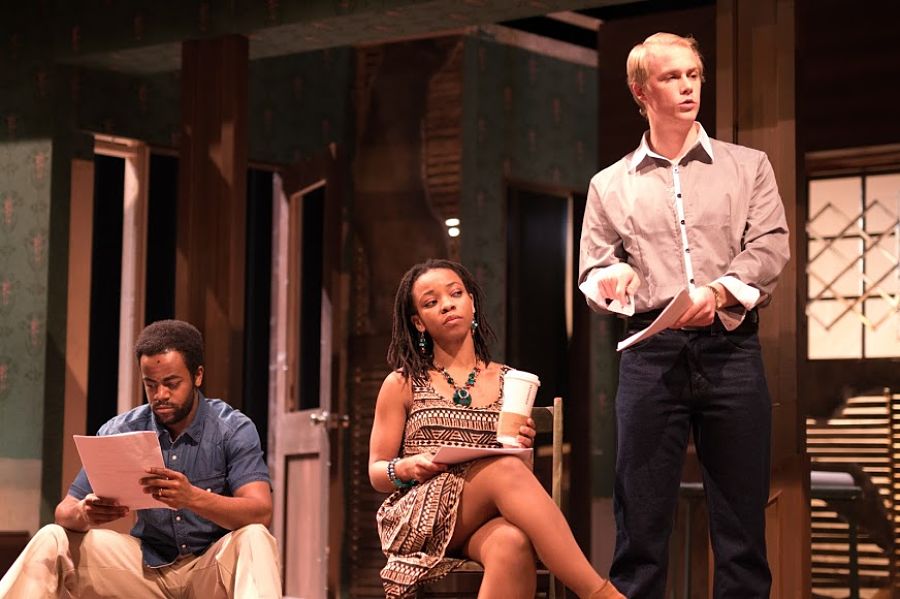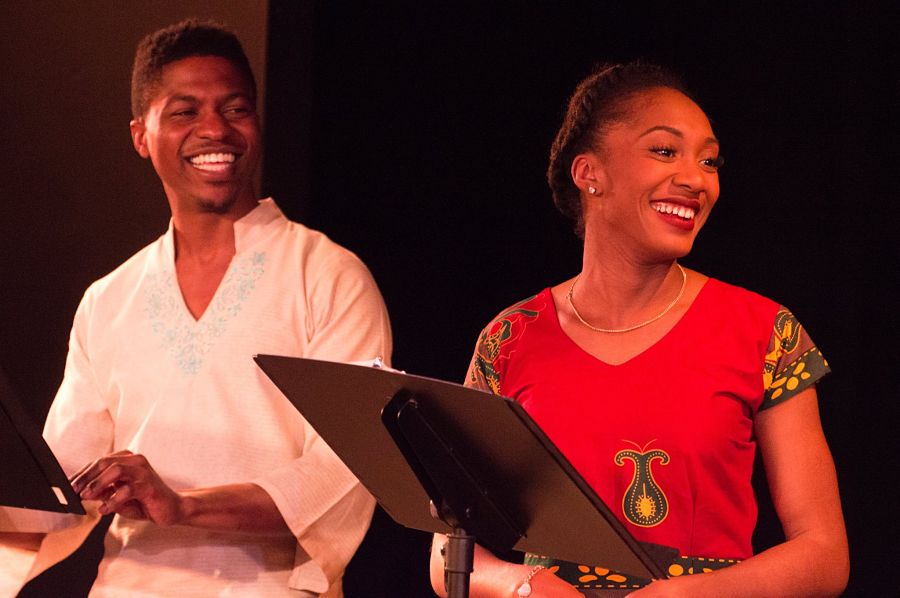DETROIT: Tim Rhoze describes the intermission of Clybourne Park, which he recently helmed at Wayne State University, as “Act 1.5.”
As the setting of Bruce Norris’s Pulitzer- and Tony-winning play fast-forwards 50 years between Act I and Act II, Lena Younger places a plant on the mantle of her living room and walks into her kitchen. Younger, however, is not a character Clybourne Park but the matriarch of A Raisin in the Sun, and a great aunt of one of Clybourne’s leading characters, and she lives an entire lifetime in the house between Clybourne’s two acts. The fate of that house, to which the African-American Youngers move at the end of Raisin, is the subject of Clybourne, while the fate of Lena’s daughter is the subject of Beneatha’s Place, Kwame Kwei-Armah’s response to Clybourne.
With the three plays receiving stagings at Wayne State in Detroit— A Raisin in the Sun ran Feb.12–Feb.21, Beneatha’s Place Feb. 19–29, and Clybourne Feb. 26–April 2—audiences have had the unique opportunity to see the three works play off of each other, and to note fresh resonances and contrasts.
While Raisin has been produced in conjunction with Clybourne before, and the theatre where Kwei-Armah is artistic director, Center Stage in Baltimore, premiered Beneatha’s Place in rep with Clybourne Park, this may be the first time all three plays have been programmed together. For all their commonalities, though, each of the three plays at Wayne had a different director, none of whom explicitly coordinated their work with the others.

Billicia Charnelle-Hines, the director of the Black Theatre Program at the Maggie Allesee Department of Theatre and Dance at WSU, directed A Raisin in the Sun and provided dramaturgical materials for Beneatha’s Place. Hines said she set out to direct Raisin as a stand-alone play, and didn’t seek out or highlight references to Raisin’s two responses. She did, however, strive to contextualize the play by showing a video depicting the struggles of African Americans during the late 1950s. While many of the images pertained to Raisin’s setting of Chicago, Hines drew connections between the conflicts in Raisin and similar struggles over urban renewal and gentrification in WSU’s hometown of Detroit.
“Have we grown since 1959?” Hines asked rhetorically, citing the year that Raisin premiered. “Are we still going through housing discrimination and housing issues now? We are. It’s not exactly the same thing like then, but there’s still certain ways to put people in certain neighborhoods. And, specifically with Detroit, those things are in effect.”
Beneatha’s Place, the newest and least well-known of the plays, got a two-week staged reading, directed by WSU assistant professor Tom Aulino — the only white director of this Raisin Cycle.
“Knowing the background of Clybourne as a response to a great black play by a white playwright, and that this was an African playwright’s response to Clybourne, and here I am the white director taking it on, caused me a little noise for a while,” Aulino confessed. “I thought, How do I approach this? But the play is so intellectually thorny, and the questions are so complicated and rich, that the fun for me and for the cast came in figuring out how to make those arguments as strong as possible and then let the play do its own thing.”
The staged-reading setting allowed the audience to focus on the words of the play and debate the emerging field of whiteness studies, a hot-button issue presented by the play, in which Beneatha Younger first moves to West Africa with her Nigerian husband, Asagai, and later becomes an academic in the field of African studies.
“Kwei-Armah has a very persuasive argument from two of the characters for the concept of critical whiteness studies, which was very surprising to me,” Aulino said. Initially, he admitted, “I dismissed the idea. When we started working on the play I thought, Oh, this is ridiculous; of course you must study from an African-American viewpoint. But in it is a very persuasive argument about moving forward in the study of everything—just moving forward in general.”
Clybourne’s talkbacks raised similar questions.
“There’s no right or wrong; there’s just your opinion and mine,” Rhoze said. “And that’s a good thing, because it gets people talking, and if you stay for the talkback it’s even more positive. I think any play of note gives you something to talk about.”

As WSU is located in the center of Detroit, the productions attracted a diverse audience with conflicting opinions about how each play handles the topic of race.
“Since opening night, it’s been interesting finding what people connect to in the talkbacks, what they’re really wanting to talk about, and discovering what they sometimes feel are unfair representations,” said Antonia LaChe, a first year student the in MFA Hilberry Repertory program, who plays the roles of Francine and Lena in Clybourne. Each performance of Clybourne begins with a “fireside chat,” prepping the audience for topics that will be covered and questions they may want to ask.
Perhaps unsurprisingly, post-show conversations moved quickly from discussions of the plays’ fictional world to the current state of race in Detroit and the U.S.
“Wayne State is in midtown in the center of Detroit, so we need to be the center of everything that goes on in this area,” Hines said. “That includes race relations.”


